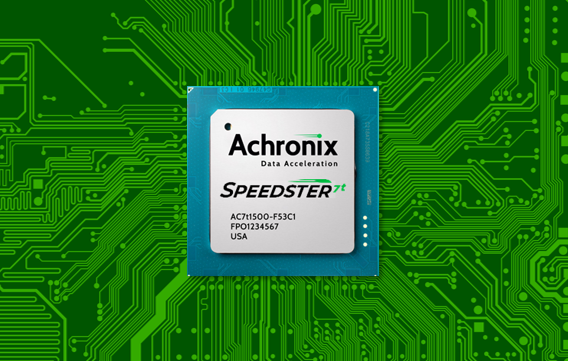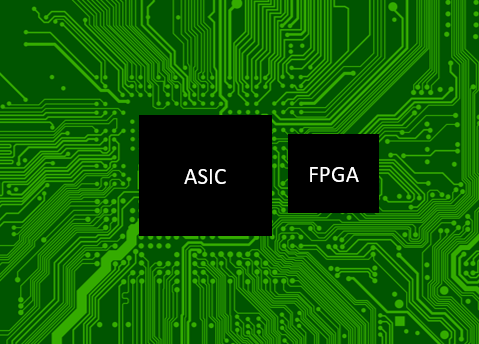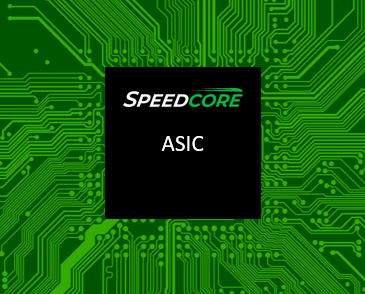While FPGAs have been around for over 30 years, eFPGA IP is a relatively new technology that is now finding its way into high-volume applications. Modern eFPGA IP support the same 7nm process technology as high-performance standalone FPGAs. Therefore, the question designers have to answer is, "should I use a standalone FPGA or design my ASIC with integrated eFPGA IP?" However, many do not consider the option of starting with a standalone FPGA and migrating later to eFPGA IP to realize the benefits of these powerful technologies in their design.
In most applications, a standalone FPGA is either the main processing unit (figure below left) or a smaller FPGA is used as a companion device to a custom ASIC device (figure below right). Starting a design with a standalone FPGA helps realize benefits such as:
- Ability to quickly adapt to major changes in standards and algorithms
- Support for multiple workloads and product variants with the same processing hardware
- Quickly add features that were needed after the ASIC design is finalized

Standalone FPGA Design

Companion FPGA and ASIC
Migration to eFPGA
As the market for your application develops and the volumes increase, the need to reduce costs to maximize profitability arises. The most common path to cost reduction is to integrate functionality from multiple devices into a single device. However, by integrating programmable functionality into an fixed ASIC you loose the reprogrammability benefits from using a standalone FPGA.
Prior to the introduction of eFPGA IP, conversion to an ASIC meant sacrificing reprogrammability delivered by standalone FPGAs. But now with eFPGA IP there is a new option available enabling the integration of FPGA functionality inside a custom ASIC. This path provides the optimal solution to increase performance while reducing system cost, power and board space compared to a standalone FPGA. Even better, with eFPGA IP, you can customize the resources required to meet your exact design specifications. This customization allows you to develop an eFPGA instance that is uniquely tailored for your application without any compromises in functionality.
In migrating a design to eFPGA IP typically requires optimizing the original FPGA code to target the different logic, memory, and DSP structures supported by your eFPGA vendor. However, Achronix realized this challenge several years ago and was the first to introduce eFPGA IP technology based on the same FPGA technology in our standalone devices. This standardization makes it very easy to migrate from standalone Achronix FPGAs to eFPGA IP technology. This simplified design flow is not possible with any other FPGA or eFPGA vendors.

eFPGA IP designed into Custom ASIC
By using the same fundamental building blocks in our FPGAs and eFPGA IP, migration from an FPGA to eFPGA IP is seamless. Key benefits include:
- Quickly migrate from FPGA to eFPGA using the same FPGA design tools and flows. No need to redesign your original FPGA code.
- Maintain original FPGA performance without significant redesign.
- 90% reduction in device cost by eliminating the standalone FPGA and replacing with licensed eFPGA IP.
- Integrate flexibility inside your ASIC for future enhancements and design changes which extends your product lifecycle.
FPGA and eFPGA IP Product Options
Once you decide that using FPGAs and eFPGA IP is the right product strategy for your application, the next step is evaluating the different product options available. There are only three companies which sell high-end FPGAs on the latest 7 or 10nm process technologies, Achronix, Xilinx and Intel. However, only Achronix also offers eFPGA IP for integration into your ASIC. With Xilinx and Intel you will need to select a different eFPGA provider and migrate your FPGA code to a new eFPGA architecture.
Achronix's Speedcore eFPGA IP utilizes the same logic structure, memory and DSP blocks as our standalone high-end Speedster7t FPGA devices. This commonality is critical because it simplifies the migration path, eliminating the need to optimize your original FPGA design into a different architecture using a new tool flow. Typically a Speedcore eFPGA design based on an existing Speedster7t FPGA design can be ready in a manner of weeks versus months of redesign and porting effort into a new architecture and design tools. There is the added benefit of having one company accountable to help support you through the entire migration, reducing both risk and time to market like no other eFPGA solution available today.
To learn more about Achronix Speedster7nm FPGA and Speedcore eFPGA IP, contact Achronix today.
